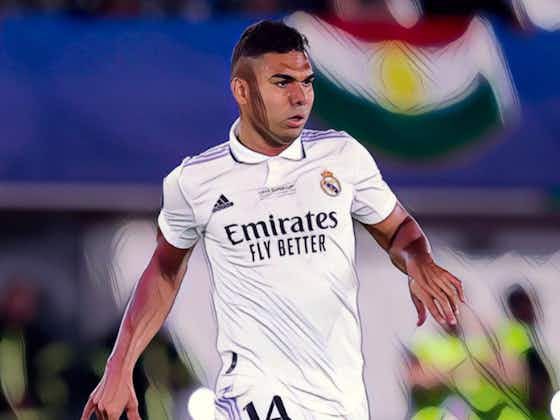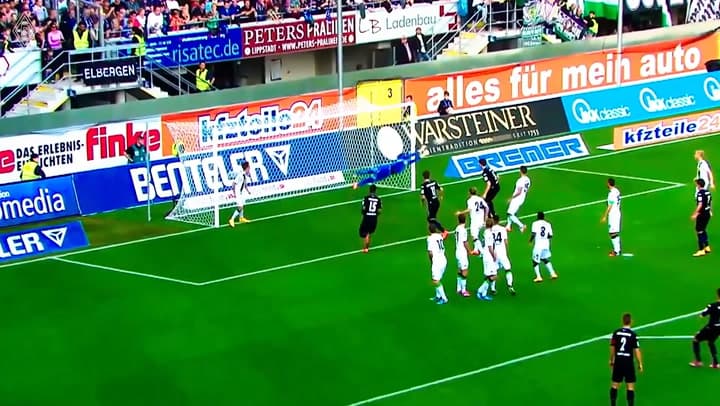The Football Faithful
·19 August 2022
Analyzing some of Man United’s high-profile transfer targets

In partnership with
Yahoo sportsThe Football Faithful
·19 August 2022

In the fallout following Manchester United’s humiliating 4-0 defeat to Brentford, it’s hard to think of a club being linked to so many players in such a short space of time. It’s yet another example of the utter dysfunction at the club, that any recruitment strategy seems to be non-existent and players are being targeted on the basis of a random set of criteria nobody seems to understand.
No common thread ties the players United are targeting, and many don’t seem to solve their key issues in the best way. This article will analyze a few of the most prominent links United have had in recent days and analyze whether they would make sense for the club in the short and long term.
Yann Sommer (GK)
This is probably one of the more sensible transfer rumours surrounding United at the moment. As the first two games of the season showed, David de Gea is woefully unfit for Erik Ten Hag’s approach.
He has excelled for United as a shot-stopper under a series of fairly reactive coaches who had their sides sit deep, not press especially high, or build-up methodically through the back. When Ole Gunnar Solskjaer periodically tried to implement such tactics, De Gea’s woes in distribution and his lack of proactivity in coming outside his area to sweep in behind his defensive line or claim crosses cost United. These are not nice perks to a keeper in a possession system. They are necessary. Without them, United will be incredibly vulnerable throughout the season and be unable to improve upon their performances.

Sommer is well-versed in this type of system. He is much more accustomed to playing in teams with a higher defensive line, a more active press, and a methodical style of build-up in which he is involved. The numbers bear this out clearly. Sommer makes 1.09 defensive actions outside the penalty area per 90 to De Gea’s 0.26 and his average distance of defensive actions from goal is 16 yards compared to De Gea’s 13.8. With the ball at his feet, he makes 47.15 touches compared to 26.28. He doesn’t possess incredible long-range possession, but he is comfortable receiving and circulating the ball many times a game.
His presence would allow United to sustain their build-up and have more success playing through opposition pressure. At 33, he’s not a long-term option, but he’s a good profile for the short-term who could immediately improve United in both defence and attack. Even if his wages would dictate he would be the number two, if he were to join, it wouldn’t be long before Sommer displaces De Gea and becomes one genuine forward step in making Ten Hag’s tactical vision a reality.
Casemiro (CDM)
It’s no secret that Casemiro has been and continues to be a world-class defensive midfielder. He is an elite ball-winner, astute with his positioning, and continues to play a pivotal role in providing solidity out of possession for one of the best midfield trios of all time. Were he to join United, he would immediately improve them in defensive transition — one of their main weaknesses. If Christian Eriksen continues in a deeper role, providing progressive passing from deep, Casemiro would be a fairly sensible complement.
However, there are glaring issues with this transfer that highlight the broader problems at the club. At 30 years of age, Casemiro is entering the twilight of his career. For the start of a new project, it’s counterintuitive to make such a massive outlay — which is what it’ll take to prize him away from Spain — on a player who will not be at his peak when United need him to be. It’s a short-term solution for a long-term gap in the team.
Nemanja Matic was a similar type of signing five years ago, and while Casemiro is better out of possession, he is far more expensive and offers less in possession. United’s build-up and inability to progress the ball from their own penalty area to the oppositions is their main issue.
Eriksen mitigates that with his passing, but a number six who can provide progression with ball-carrying as well as strong defensive output is what United really need. Casemiro is a big upgrade on current options though, even in possession, he at least provides more security and awareness with the ball than Scott McTominay. However, he’s a massive transfer outlay for an ageing player who is not the ideal profile for the United midfield, and is the sort of short-term signing the club continues to make and regret.
Moises Caicedo (CDM/CM)
While an unlikely transfer given how recently he joined Brighton, Caicedo is a fantastic player who is more in the realm of the profile of target United should have. At 20 years of age, he’s far from entering his peak but can still improve upon United’s current options. In comparison to their main midfield target of the summer Frenkie de Jong, Caicedo provides more defensive output but nowhere near the quality of ball-carrying. Nevertheless, Caicedo can carry effectively through pressure and give United a more stable outlet in possession than Fred or McTominay.
United had the opportunity to sign him for much less earlier, so he is at least a target that the club have clearly scouted and put through some sort of transfer process. It shows because he’s the type of midfielder United actually need. If Brighton were to yield and let him go, United could escape this transfer window with a profile of player they desperately need: a deeper-lying, defensively solid, progressive midfielder.
Christian Pulisic (LW)
This reeks of desperation. That is no slight against Pulisic as a footballer. His goal output is impressive, he is an active contributor in a press, and positionally versatile. The problems with the deal are that United are once again signing a player who is best from the left-hand side. Jadon Sancho thrived on the right-wing for Dortmund, but that was with Achraf Hakimi supporting him. Sancho is best when he can come infield and combine with the help of an overlapping fullback, something that in United’s squad, he is more likely to get with Luke Shaw or Tyrell Malacia on the left-hand side.
United need a right winger capable of holding the width themselves, and enabling Diogo Dalot to play a bit deeper and narrower. Antony from Ajax is that kind of player. Pulisic is not. He’s also incredibly injury-prone, and coming on a loan deal doesn’t bode well for the long-term chemistry of the frontline, something that takes time to develop and would be stunted with Pulisic in the side. It’s a deal that can be made out of convenience, but it’s not one that especially suits United at present.
With all these transfer targets, even the ones that make sense, it’s clear United are desperately searching for targets to give Ten Hag better tools for the upcoming season in the absence of a clear recruitment process to drive their decision-making.
Their strategy seems to have been to get players Ten Hag wants, and to let him dictate targets. At Ajax, though, Marc Overmars and a whole infrastructure of recruitment and scouting did that for him. At Liverpool, when Jurgen Klopp wanted Liverpool to purchase Julian Brandt instead of Mohammed Salah in 2017, Michael Edwards and the club’s recruitment persuaded him otherwise.
For United to be successful long-term, they need a structure to find and pursue targets that consults but is not dependent on Ten Hag. They may get more players before the end of the summer, but they will do nothing to help Ten Hag forward long-term if Manchester United cannot develop a sensible recruitment approach.






























































